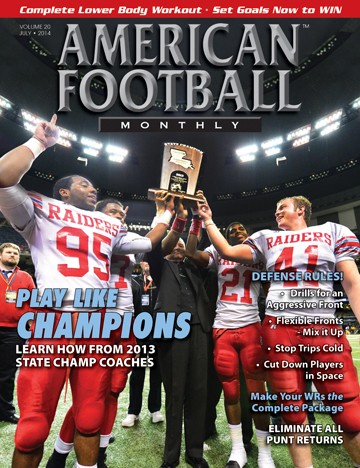Article CategoriesAFM Magazine
|
Complete Package: Becoming a complete wide receiver includes becoming a better downfield blocker.by: Sean WilsonWide Receivers Coach, Earlham College © More from this issue Blocking is critical to becoming a complete wide receiver. Blocking as a receiver is about effort, position, and leverage. A complete receiver always puts as much effort into blocking as he does into catching passes. It is great if you have what it takes to run clean routes to get open and catch the football, but what if the play that’s being called is a running play? Will you do your part to ensure the play is a success and that a teammate has a great opportunity to score? Or, will you just play lackadaisically until a passing play is called? Do the latter and your value will quickly fall, especially if you’re not fulfilling responsibilities outside of blocking. Blocking as a receiver is often difficult because you are blocking in open space. A complete receiver is under control, understands what the play is trying to ac....The full article can only be seen by subscribers.
|
|
|||||||
| HOME |
MAGAZINE |
SUBSCRIBE | ONLINE COLUMNISTS | COACHING VIDEOS |
Copyright 2026, AmericanFootballMonthly.com
All Rights Reserved





